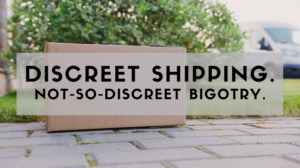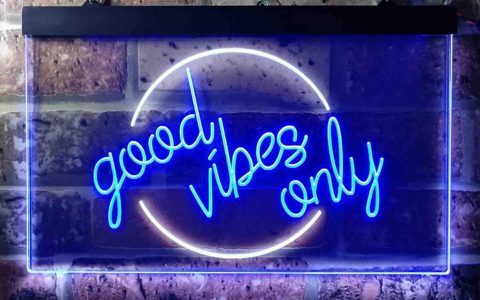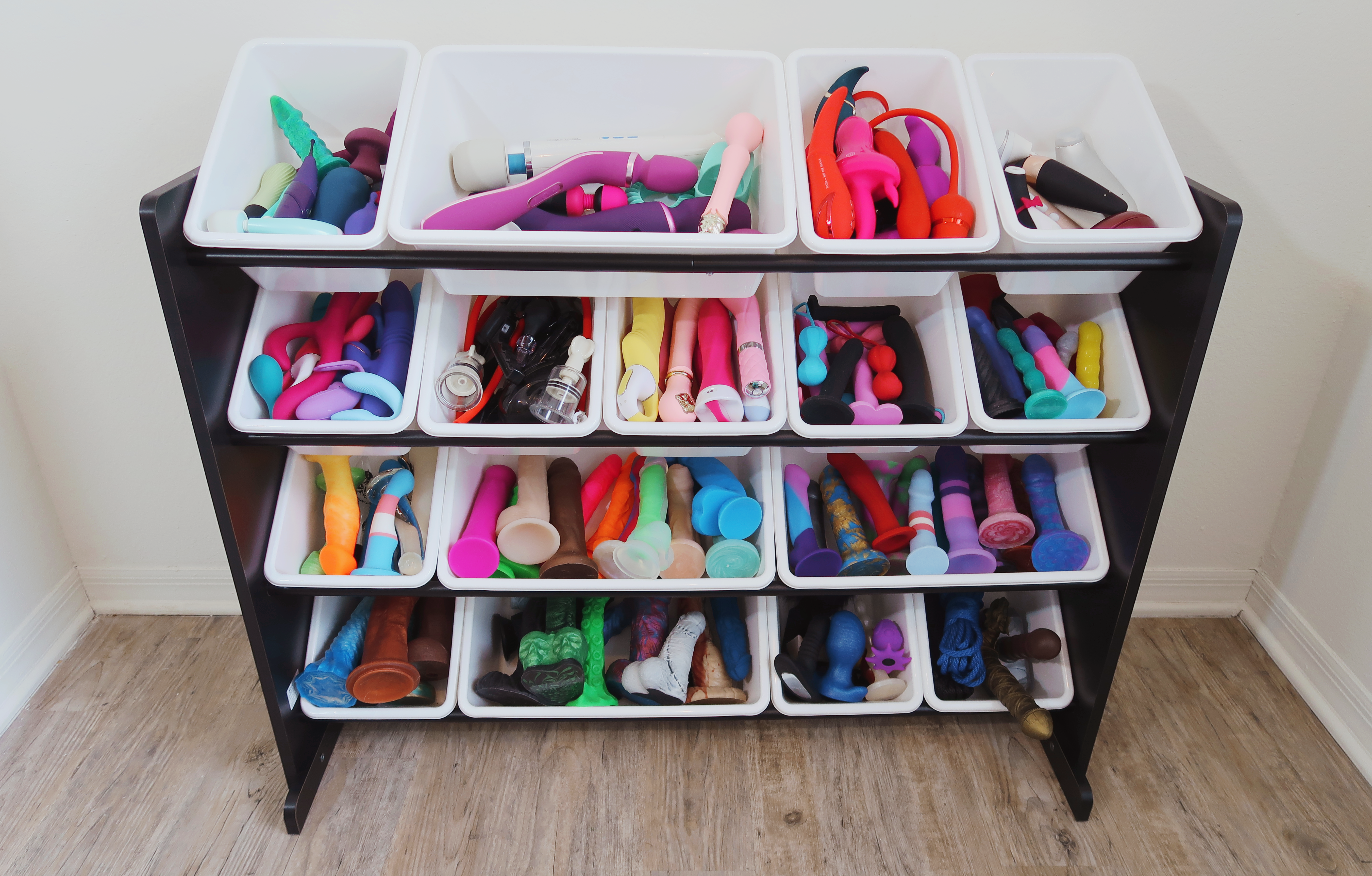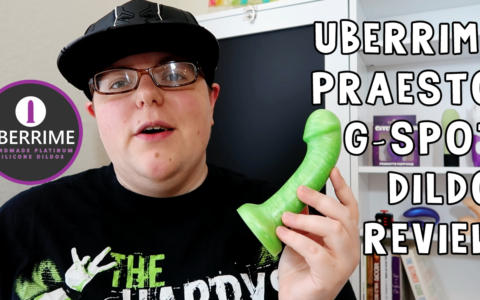
Is your sex shop a safe place to browse for people of marginalized identities? Do you think you’re welcoming to trans customers, Black customers, and disabled customers? Have you ever even asked yourself that question?
I’ve scoured a lot of sex shops in my years as a consumer and sex toy reviewer. I see the same harmful choices and regurgitated microaggressions over and over, even in “progressive” shops.
I don’t have the time or energy to tackle every misdeed, but I thought it was important to at least talk about the ones that have been on my mind a lot lately.
1) Gendering sex toys, sex toy categories, and customers.
Ah, yes, the three genders: “men”, “women”, and “couples”. A majority of sex shops categorize their toys this way, which either inadvertently or bigotedly disregards queer and transgender shoppers. Some sex toys are designed for specific body parts – the We-Vibe Melt works best on clitorises and nipples, the Aneros Syn Trident is shaped for prostate stimulation – but body parts don’t have genders, people do. I have a clitoris, and I’m not a woman. I don’t want to shop in the “women’s” section. Sell me “Vibrators” or toys “For Vulvas.”
When you force customers into shopping in gendered boxes, you limit customers’ imaginations about what kinds of toys they can use on themselves and their partners. You alienate transgender people, and potentially cause them dysphoric distress. Sex shops can already be uncomfortable for people – you should be doing everything you can to make their shopping experience positive and affirming.
Need help? I wrote an entire guide on making sex shops gender-inclusive.
2) Limiting “couple” to cis straight people who have penetrative sex.
“Couple” sex can be had by queer people, trans people, and more than two people at once! Besides, penis-in-vagina sex isn’t the only sex act shared by cisgender straight people. Assuming PIV is everyone’s goal is homophobic, transphobic, ableist, and just plain unimaginative.
Any sex toy can be a couple’s toy, but products specifically designed for partnered use can include: positioning aids, toys with remotes, safer sex barriers, strap-on harnesses, bondage restraints, inflatable plugs, impact toys, flavored lubes and massage oils, versatile toys, double-ended dildos, etc. What do we usually find in a couples collection? Cock rings and a couple of wearable vibes like the We-Vibe Sync.
If I see one more sex shop put their strap-on harnesses under “fetish” because you only associate them with power exchange and pegging, I swear to fuck…
3) Using foods/flavors to describe skin tones.
Realistic dildos’ skin tones are almost universally labeled “chocolate,” “mocha,” “vanilla,” “coffee,” and “caramel.”
I think the foods/flavors thing is weird, objectifying, and is influenced by – and directly contributes to – the fetishization and othering of people of color. Us “vanilla” tone folks only ever get described as such when it’s in a food color lineup like this, whereas people of color are routinely reduced to yummy exotic flavors everywhere because white people dehumanize, hypersexualize, and other them. (And don’t forget white people have a long history of literally and figuratively cannibalizing people of color.)
This racist practice is so normalized in the sex toy industry (and the adult industry in general) that people assume it’s standard procedure. But every manufacturer and retailer has a choice. Choose to stop.
4) Racist marketing and displays.
In 2018, I took a trip to our local sex shop for a class. Right in the middle of the entry was a costume display including a feathered headdress on a sexy mannequin. I was so put off by it, I haven’t been back since. Native American women are 2.5 times more likely to be sexually assaulted than any other ethnic group in the US. Native identity isn’t a costume, sacred ceremonial wear isn’t for your horny escapades, and the genocidal devaluing and perceived consumability of Native women and Native cultures aren’t sexy.
I’m tired of seeing “sexy” geishas and Romani women (always slurred as “g*psies”), “ancient wisdom” marketing tropes leaning into the othering of Chinese and Indian sexuality, and Black dildos and butt strokers advertised as uniquely, enticingly “big” and virile. I’m tired of it, and I’m white. Imagine how fucking exhausted, uncomfortable, and traumatized people of color are, being reduced to a dehumanized fetish for the white gaze?
5) Big Black… anything.
Stop it with the egregiously racist “big Black cock” and “big Black booty” thing. Black penises some in all sizes and degrees of softness and hardness. You can stock and sell dildos with dark skin tones without turning it into a racist fixation. You can also stock black and brown skin tone strokers without describing them with language that invokes racist stereotypes, or sensationalizing about dimensions or sexual availability.
Black men – and often specifically their penises – are fetishistically framed as big, strong, brutal objects that exist to humiliate white men and ravish white women. This racist trope is often used to justify everything from racist violence against Black men and boys to “protect” white women, to normalizing and discrediting the on-set abuse of Black performers because their bodies are seen as too powerful to be anything but perpetrating. (The adult industry is so fucking shitty to Black people.) Black women’s “enticing” (yet hated) curves are used to justify and permit sexual violence against them, because their hypersexualized bodies have always been treated and legislated as consumable objects in America.
Stop othering Black bodies. And support the BIPOC Adult Industry Collective, please.
6) Having an inaccessible website.
Disabled people masturbate, have sex, and use sex toys. There’s a whole podcast about it! Statistically speaking, many of your customers are disabled people too. Your website and social media should reflect that reality by being accessible.
Is your text large enough to be read? Are your video promos captioned? Do you have alt text for your product photos? How difficult are your drop-down menus to navigate? Do you have a section for accessible sex toys, such as those with looped handles, velcro straps, and remotes with easy buttons? Are your product descriptions clear and unambiguous? (“Self-explanatory” and “common sense” are ableist concepts, banish them from your mind.)
I’m autistic, and the problems I run into the most often are sensory-based, like eye-searing color contrasts, or ads or videos that automatically play and trigger a sensory overload.
7) Only catering to thin people.
What’s the sizing of your largest strap-on harness? Do you stock plus size lingerie? Do you know what kind of toys work best when you have a low-hanging belly, fleshy vulva, or a limited reach? What’s the maximum neck width for your collars? Are any of your product models, social media influencers, or customer services reps fat?
This is another complaint rooted in firsthand experience. As a fat person I’m constantly having to double-check listings and email retailers about product sizing. It’s so fucking frustrating to be told I’m “the first person who’s ever asked us that!” because it doesn’t actually mean no one else has ever wondered. It means I’m the first person who felt comfortable demanding an answer.
Like half the US is fat. Wake up.
8) Not accurately and enthusiastically reflecting their customer base.
Many sex shops I’ve browsed have built their entire business around thin, white, straight cisgender people. If a non-fetishizing advertisement, banner, social media post, or product photo features a model, they’re almost always part of most or all of these privileged categories.
If customers are lucky, they might see a pair of sexy lesbians (to entice male shoppers), a single interracial couple (always involving a white person), or an attractively proportioned size 10. (She’s usually part of a back-patting promotion about “loving yourself.” You know we wouldn’t have to try so hard to love ourselves if you weren’t directly contributing to the hatred and erasure of actual fat people.)
It’s almost like these businesses are selling the idealized life of being thin, white, straight and cisgender more than they’re selling pleasure products.
I understand that a lot of marketing material is out of a fledgling shop’s hands, because sex toy companies provide the stock photos. But shops should be pushing back against that shit and demanding better from manufacturers. When the budget allows, you should be making sure your own marketing – including which social media influencers you work with – is as diverse as the people you serve. Fat folks, people of color, transgender people, sex workers, bisexuals, lesbians, disabled folks – and people who occupy multiple marginalizations at once.
Welcome all of us.
Was this post helpful? Buy me a coffee or buy me a book.
This post includes affiliate links. While using these links to make a purchase comes at no extra cost to you, it helps keep my website running.




9 Comments